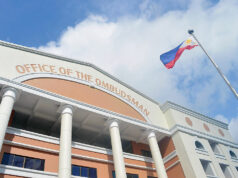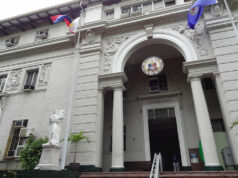DoLE issues new guidelines for construction workers’ safety and welfare

by Almira Louise S. Martinez, Reporter
The Department of Labor and Employment (DoLE) on Monday issued the revised implementing rules and regulations (IRR) of Republic Act 11058, or the Occupational Safety and Health (OSH) Standards Law, to improve the safety and welfare of construction workers at work.
Out of the 216 work-related accidents reported last year, the department said a significant number of cases occurred in construction sites.
“Construction workers are not just at risk from the heat and rain, but also from the lack of safety equipment,” Labor Secretary Bienvenido E. Laguesma told BusinessWorld in Filipino.
The updated IRR orders that the standard designs and specifications for the temporary housing facilities must have water stations, sanitary toilets, bathing areas, laundry spaces, kitchen and dining facilities, healthcare stations, communication hubs, recreational spaces, and designated smoking areas.
“We’re aligning our policies with what’s happening in workplaces,” DOLE Undersecretary Benjo Santos M. Benavide said in Filipino during a press conference.
“Pag nirereview mo ang mga patakaran, binabatay mo sa kung ano yung mga naging karanasan [When you review policies, you base it to actual experiences (of workers)],” Mr. Laguesma said.
“You won’t let policies stay stagnant if you can see that it doesn’t maximize all the possible benefits it could get once changed,” he added.
With the new guidelines, the department hopes to achieve “zero accidents” across all industries.
“Lagi nating ipinapaalala na ang pagkakaloob ng ganyang klase ng protective equipment ay hindi gastusin lamang [We always remind (the employers) that protective equipments is not just expenses],” the Labor Secretary said. “It’s an investment for the health and safety of our workers.”
Implementation of “heat leaves”
According to the Philippine Atmospheric, Geophysical, and Astronomical Services Administration (PAGASA), several areas across the country could experience the ‘danger’ heat index level category, which ranges from 42 to 51 degrees Celsius.
Due to the extreme heat, the Federation of Free Workers (FFW) calls upon additional protective measures, such as including “heat leaves” under the emergency leave provisions.
A ‘critical’ gap must be addressed in the leave benefits covering heat waves, according to FFW President Jose Sonny G. Matula.
Meanwhile, Mr. Laguesma noted that “heat leaves” may fall under the many currently existing leaves. He added that the recent labor advisory on the health and safety of workers is also related to the weather disturbances experienced by workers.
“While we welcome all sorts of leaves that can alleviate the plight of the workers, we also have to balance it with the concerns of employers,” he said.



